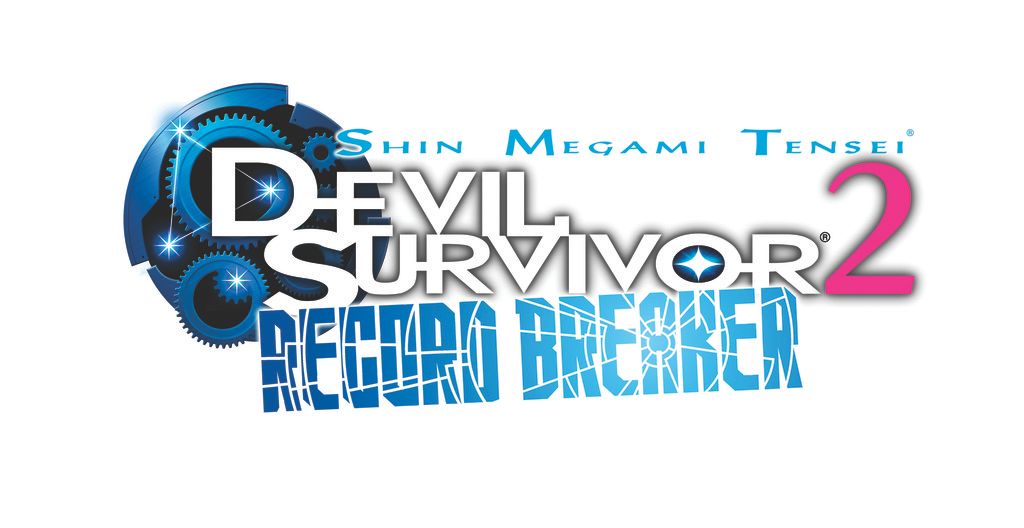- Format: 3DS
- Unleashed: Out Now
- Publisher: Atlus/Reef Entertainment
- Developer: Atlus
- Players: 1
- Site: http://www.atlus.com/devilsurvivor2rb/
- Game code provided by the publisher
Shin Megami Tensei, SMT, MegaTen, Dave… the series is known by multiple handles (though maybe not that fourth one); but whatever you call it, it’s evolved over the last few decades from Japanese-exclusive curio to worldwide cult classic. If you’ve yet to experience an SMT game, Record Breaker seems like a perfect place to start. It has not only tinkered with the DS game Devil Survivor 2 in an attempt to bring it in line with the gaming world of 2015, it also throws a fully-fledged sequel into the package as a generous bonus. While this is a fantastic collection for existing fans, its appeal for newbies is debatable.
Even if you’ve never played a MegaTen (look, we’re using all of them) game, you may well have heard it discussed in the same breath as Persona. The two series are mostly similar in concept rather than execution though, so let’s just say they’re both turn-based JRPGS with a heavy emphasis on stories involving high school students. The story of Devil Survivor 2 is an interesting and generally well-written one. There’s a rumour doing the rounds of your mute protagonist’s high school (stop us if you’ve heard this one before…) that if you sign up to a particular website, you’ll get to see videos showing how your friends will die. The rumour is true, but it gets weirder. Pretty soon demons of unknown origin are killing people and wreaking havoc, and even larger and stronger creatures start appearing too. It’s up to you and your friends to save the day via a demon summoning app on your phones (yup) which allows you to command beasties of your own.
Lingering on the story a little longer – as it’s really the heart of the game – the included sequel is fully voiced, and DS2 now is as well. The acting is good enough to help the story along, and special credit must go to your friend Daichi’s actor. He sounds like he’s having a great time, which he probably is, which is likely why his performance is far and away the best. On the other end of the scale, Io’s actress’s performance is easily the weakest, and unfortunately she’s a major character too. This seems mostly down to the nature of the character. She’s supposed to be constantly timid and nervous but, especially given how everybody else (both male and female) adapts to the situation, she usually just comes off as annoying and with an almost non-existent emotional range. There are plenty of witty lines in the script – some of them laugh-out-loud funny – but none of them given to poor Io.

Bloody PPI texts.
As previously mentioned, combat is turn-based. The original DS release saw a system that already looked out of date six years ago, and… things haven’t really changed here, unfortunately. It uses the sort of rock-paper-scissors system of strengths and weaknesses that has served turn-based RPGS well for decades, and there’s nothing wrong in that. The problem is that very little is done to even try to hide the dry number-crunching and elements of randomness, and as such it’s a love-it-or-hate-it system. In combat your enemies appear as static cardboard cut-outs, though they might change colour or wobble about a bit while attacking or being attacked. You and your demon buddies don’t appear at all – unless you count the Twitter-avatar-style pictures and stat numbers at the bottom of the screen. Sometimes, whether your attack hits or misses seems to be entirely down to chance – because sometimes it is.
Despite the introduction of a new (easier) difficulty, this game growls at those unfamiliar with the series, and positively mauls anybody unfamiliar with the genre. About two thirds of the way through the (main) story, the difficulty suddenly skyrockets. Without warning, you are punished if you’ve failed to grind in optional battles and/or if you haven’t chosen, bought, fused, and managed your demons very carefully. Not to mention if you haven’t given very careful consideration to how you’ve levelled up your human character, and when and how you’ve deployed his or her human friends in battles. The easier difficulty does at least let you save in the middle of a battle and repeat one if you die, keeping your XP and abilities; though this simply kicks off a joyless Groundhog Day scenario where you try different tactics until realising the reason you finally won is simply because you levelled up sufficiently.

Not sure exactly what this thing is, but it takes a long time to die.
You’re advised to complete the main game before trying the new story. The second follows immediately after the ending of the first but this isn’t, in truth, the main reason for playing in chronological order. If you make it out of the other end of the main game alive, you will have learned the systems (if you needed to) through trial by fire, with a much better understanding of how everything works. You’ll need this for the new story as it’s even harder, and completely ignores your level, abilities etc. from the main game. You start again from scratch, and you can find yourself in trouble as early on as the second fight.
If you played and loved Devil Survivor 2 the first time around – and many people did – then you absolutely need to buy Record Breaker. If you’re unfamiliar with Shin Megami Tensei, then be aware that the less familiar you are with turn-based JRPGs, the harder this will be for you to get into. The compelling story is a great reward for those with the experience or patience to get maximum benefits from demon management and to overcome the battles; but you need to think carefully about whether one of those people is you.




Comments